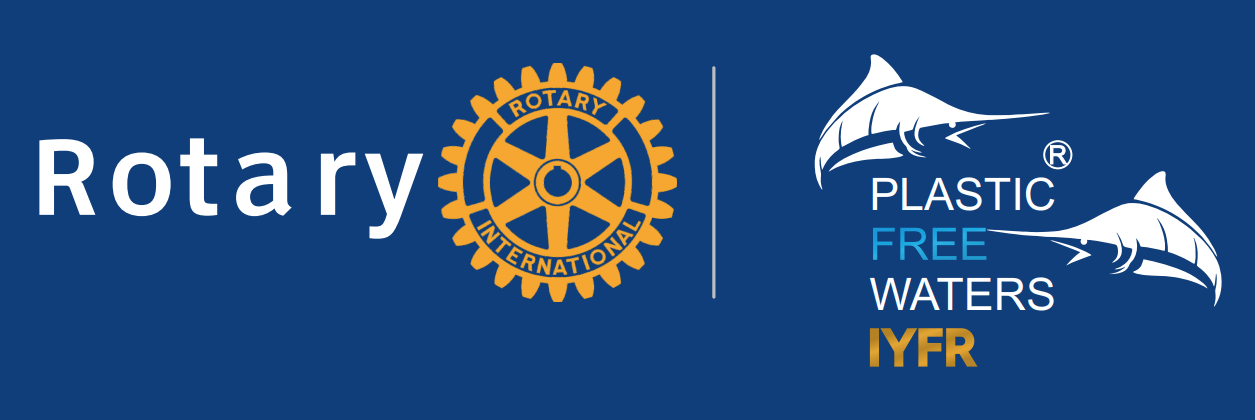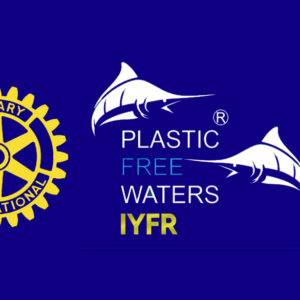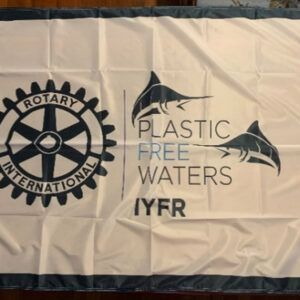MEDITERRANEAN TODAY AND TOMORROW
An Archipelago of urgent problems and infinite resources by Lavinio Gualdesi
Introduction
The Mediterranean Sea is an inexhaustible source of energy. Unlike the oceans, the Mediterranean Sea offers very interesting general characteristics from the point of view of the management of its resources, which also benefit from even more favorable local situations.
Given the eminently popular connotation of the following considerations, examples of the large amount of data collected over the years in many environmental databases will not be exhibited, but it will be taken into account to illustrate how their collection, followed by detailed scientific analyzes, make this basin the most observed and studied in the world. A basin therefore endowed with uniqueness, with great potential, but also with a delicate fragility.
The Gibraltar threshold, in fact, prevents cold and deep water from the Atlantic Ocean from entering the Mediterranean and therefore the thermal values in the seabed always remain above 13 degrees centigrade. The more moderate action of these phenomena means that the Mediterranean Sea enjoys a more temperate climate, creating unique and precious eco-systems. This also protects us from violent natural events such as hurricanes and typhoons.
Anthropogenic Pressure and Minor Islands
All this begins to be increasingly disturbed by changed thermodynamic balances that risk making us witness increasingly violent phenomena as some variables, in particular the temperature and density of the sea, are modified by the so-called climate changes. Even modest variations in surface temperature associated with variations in atmospheric pressure can generate strong local instabilities.
Another source of criticality of the basin is represented by anthropogenic pressure. Its coasts are densely populated almost everywhere and even in formerly desert areas and now made habitable, this contribution is increasingly evident. In the small islands, in the archipelagos, in the coastal islands formerly used by the Phoenicians as the basis of their maritime trade, the problems are more evident and aggravated by the seasonality of anthropogenic pressure and by the scarce winter population that protects their recovery.
Here are the major problems:
construction of buildings on the coasts, which, in addition to spoil the natural landscape from an aesthetic and tourist point of view, hinder the important natural osmosis between sea and land that generates those beautiful areas that should instead be valued due to the presence of a natural eco system which must be left uncontaminated to protect the survival of natural and centuries-old species;
harmful discharges deriving from human activities which can be summarized as follows:
- release of untreated wastewater;
- release of hot water from refrigeration systems;
- coastal dispersion of salt water from desalination plants;
- gaseous pollutant contribution into the atmosphere from power plants, land and sea traffic;
- release of debris into the sea. In particular, plastics of various origins;
- microplastics derived from washing of fabrics and fragmentation of disposable products;
- hydrocarbons released from coastal shipping;
- alluvial debris carried by waterways.
- noise pollution.
Solutions for protection
It is clear that human activities are seriously and rapidly compromising this natural heritage which risks becoming a huge problem rather than an inexhaustible resource. Since this phenomenon has been under scrutiny by the scientific world for many years, the urgent measures desired and then implemented were not long in coming.
Small Islands and Marine Protected Areas
Here, therefore, the birth and spread rapidly in the Italian peninsula, but also in many other Mediterranean areas, of Marine Protected Areas and “park areas”, where human activities should be regulated, or even forbidden, to protect the natural heritage present in such areas. Come to think of it, it is as if we were allowing thieves to enter the house and wander around undisturbed because we have put jewels, money and valuable paintings in a safe. But the Mediterranean continues to be there and can offer much more.
The Archaeological Heritage
On its coasts, for example, in the depths between the shore and the first three hundred meters, around the archipelagos, seat of ancient trade routes, is the largest underwater archaeological heritage coming from hundreds of centuries of maritime coastal traffic. From a report by the Scuola Normale Superiore of Pisa, drawn up during the European project “Thesaurus”, it emerges that in the Tuscan archipelago alone there would be numerous archaeological sites and various finds to be explored and secured.
Although at first glance it may seem like a paradox, it can only be human research, technique, engineering and marine environmental research that mitigate and solve the problems listed above. Given the multifaceted origin of the problems, however, a multidisciplinary approach is required both from the point of view of the various environmental sciences and the engineering specialties. Finally, it is necessary to wisely combine the experience of operators in the associated areas of interest with the creativity of young people interested in solving problems through targeted projects. Any accidental spillage on land ends up creating problems for the sea and its islands.
The technology of CO2 hydrates
Also the hot water coming from the refrigerants of thermal systems and the brackish water coming from installation systems are part of a complex framework of possible industrial interventions that would have the potential to solve all these aspects through innovative solutions.
The use of hydrate technologies, for example, would make it possible to use the compression of the carbon dioxide emitted by the plants to create, through suitable reactors, CO2 hydrates, which supply fresh water desalting it from the sea and concentrate the sea salts that can be started. to industrial uses and not to be lost at sea.
The fresh water thus produced can be used both for irrigation and domestic purposes or be used to dilute particularly compromised and acidified sea areas.
Even domestic or industrial wastewater, which is often a problem on islands, could use this technology to concentrate pollutants and provide clean water. But the great unknown of the fate of carbon dioxide weighs on this technology. In fact, from the Kyoto Protocol onwards, this great culprit of the greenhouse effect has been kept under observation.
Since then, all specialists have argued that the CO2 rate is growing so strongly that emissions should be regulated. On several occasions, given that in fact the quantity present does not decrease, but rather grows, we propose to arrive at the 50s, then 40s, then 30s of this century, with a goal of zero emissions. How much this is just a utopian discourse is explained by the fact that, if a country emits less than the limit level set by the Kyoto protocol, the most industrialized countries buy the shares saved by it, so that if the total increases it is not their fault. but of those who sold them the shares.
But with the technology of hydrates, even the contribution of CO2 into the atmosphere could decrease since the catalyst of these systems would be precisely the CO2 compressed up to the liquid phase, as is the case today in commercial cylinders. The CO2 Odyssey seems like a never-ending story and the international jumble of the costs of this product oscillates between paying big bucks to get rid of it and paying equally big bucks to get it in the compressed phase.
The Utopia of plastic
The problem of plastics and microplastics, then, does not have an effective solution since any recovery, collection and disposal system, however effective it may be, inexorably collides with the reality of numbers. We cannot even think of solving a problem in which those who reclaim with great efforts – often also economic – a conventional quantity of 100 units, find themselves immediately hit by a dispersion in the same place of 100,000 units. “A Sisyphean effort”, he would say. However, this activity, for now ineffective, could be accompanied by two elements of great future:
the reclamation, conservation and protection of the most delicate and precious sites by means of barrage techniques, filtering, monitoring and all that can be effective on a small scale in sensitive areas such as the Small Islands and their Marine Protected Areas. implementation of a policy of education and awareness aided by teaching and regulations aimed at making people understand how much damage can be done with the commercial practice of “disposable” and how much effort it costs to repair the damage caused.
Noise pollution and cetaceans
Finally, a mention of noise pollution. Considering that cetaceans communicate with each other through the emission of acoustic signals, it is easy to imagine how the emission of noise from boats can harm these marine mammals. Once again science, in the form of underwater acoustics, helps not only to record the sounds emitted by Zifii, Stenelle, Bottlenose dolphins and Calderoni, but expert listening to marine biologists allows, through special hydrophonic equipment, to make very useful behavioral determinations of the various species. This allows us to understand and study their needs for nourishment, reproduction and communication and also to secure them from accidental collisions. Passive listening, of course, already helps a lot to understand. Low frequency emissions, on the other hand, being very dangerous for the species, have been banned for some time. Even military exercises with underwater discovery sonars, which emit according to Safety Protocols, take place in areas free from marine mammals and on less dangerous frequencies.
Finally, the establishment of the Cetacean Sanctuaries constituted a very effective protection action, even if it is difficult to enforce the rules related to it. And, in terms of harmful noise emissions, a scenario with perverse effects is emerging.
Wind turbines -Wind Farms
Since the terrestrial recourse to so-called alternative energy sources seems to have become a watchword to which everyone must comply in order to approach the date of zero emissions and since wind farms emit a deafening noise when they work at full capacity, we speak insistently to transfer the problem to the middle of the sea. Thus, after having polluted and defaced part of the terrestrial landscape, it is now thought that a wind farm at sea can solve the problem. This idea, scientifically not acceptable and also inadequate and dangerous, is the daughter of an unsuccessful marriage between the two worlds that do not dialogue: that of the terrestrial system and that of the marine systems. Perhaps the disadvantages of both can be summed up.
A wind tower needs important foundations and shallow water to reduce installation costs. But its noise and visual impact do not allow it to be installed near the coast. Offshore plants provide for major excavations on the seabed both to create the basement implanted on the seabed and the excavation to bury the electricity cable to be conveyed to the ground. Furthermore, the species present there will have to adapt to this almost constant noise. From the point of view of sustainability, think about how much CO2 this important plant can consume for its construction.
Another sore point are the materials. Those who make terrestrial wind turbines are unfamiliar with the marine environment and the potential rapid corrosion to which the materials used are subject, if not carefully selected in advance. I would like to know “formally” how many years of operation are required to achieve parity between the energy spent to build a plant and the energy thus produced and only when there is wind. It cannot be forgotten that the first plant built by the Swedish propeller company Ka.Me.Wa, it communicated that, to amortize the cost of energy used for their propeller with adjustable blades, it would take two generations of time in theoretically continuous production. .
We should stop seeing the Mediterranean Sea as the garbage bin of the undifferentiated wastes.
Energy from the motions of the sea
So with my colleagues who are experts in physical oceanography, the question arose spontaneously: “but what if we used the sea currents and wave motion directly”? Submarine engineering already has many resources to intervene to transform natural motions into energy. And here is that the great mass of data that exist both of physical oceanography and marine biology of the Mediterranean can constitute the precious starting point for conferring reliability and continuity to production plants that are based on repetitive and predictable phenomena. Both currents and wave motion are essentially seasonal steady state phenomena and therefore there is the possibility of distribution of small power plants distributed on the seabed where it is appropriate from both a physical and biological point of view with a negligible environmental impact compared to the strongly invasive of wind turbines and photovoltaics.
An excellent and not negligible advantage of this type of systems is that they could provide more continuous energy than the intermittent one of wind-dependent wind turbines and solar-dependent photovoltaic panels because in the event of a decrease in sea currents and wave motion there are energy accumulation mechanisms. natural (without battery accumulators) that retransform the potential energy accumulated by the wave motion into kinetic energy of the Hydroelectric type in the rare moments of flat calm. In the smaller islands, where there is a hunger for energy, but also the possibility that the dynamics can then be facilitated by local situations favorable to important local currents, this would be a significant advantage and to be explored with appropriate means.
In certain islands,
due to their conformation which remains respected and valued, certain accumulations of sea water in lagoons even through a modest variation in tide height, restitution under hydroelectricity would also be at no cost.
All of the above should be studied in various contexts by marine biologists, oceanographic physicists and environmental engineers to verify cost-effectiveness, environmental impact, sustainability, reliability, sizing of reliable modules to confer energy efficiency at practically negligible environmental costs.
Taken from Omeganews.info, a periodical owned by OMeGA (Mediterranean Observatory of Geopolitics and Anthropology), a non-profit, non-political, non-partisan, non-denominational Cultural Association, which does not allow discrimination based on sex, race, language, religion, nationality, age, political opinions , personal and social conditions. It deals with history, anthropological development, social context, geopolitical processes, economic trends, relations between coastal countries and observation of the influence of external agents in the Mediterranean context: essential components of socio-political-economic-anthropological development and the object of curiosity speculative of the group and its mission.





